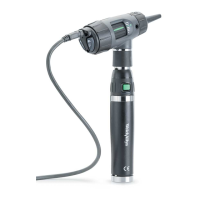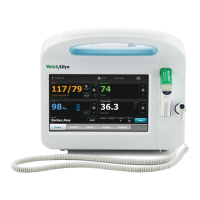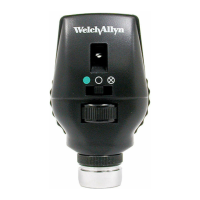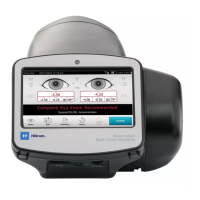How the MicroTymp2 Instrument Works
A block diagram of a Welch Allyn MicroTymp2 is illustrated in Figure 25.
Figure 25
A 226-Hz probe tone is introduced into the sealed ear canal by a miniature
loudspeaker. A miniature microphone records and monitors the sound
pressure produced in the ear canal.
The sound level is maintained at a constant 85 dB SPL (Sound Pressure
Level) throughout the test by a microcomputer. When the amount of sound
absorbed by the middle ear increases, the speaker is driven harder by
increasing the drive voltage to maintain the constant SPL. The voltage
required to maintain the probe tone at 85 dB SPL is proportional to the
acoustic admittance of the ear.
Air pressure in the ear canal is changed with a miniature pump. The pressure
transducer monitors air pressure, feeding this information to another micro-
computer so that it can control the rate of pressure change (sweep rate).
As pressure in the ear canal is changed throughout a test, a microcomputer
computes acoustic admittance and plots admittance as a function of pressure
on the liquid crystal display.
Appendix A
A-27
Liquid Crystal
Display (LCD)
Microcomputers
Pump
Airflow
Pressure
Transducer
Microphone
Loudspeaker
Sound
Out
Sound
In
Tip

